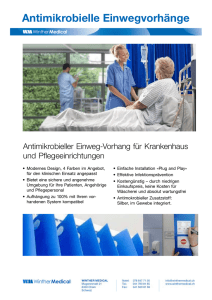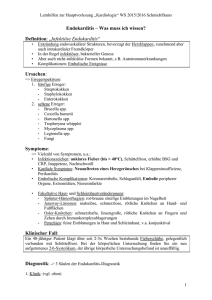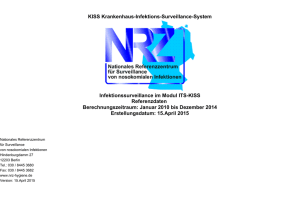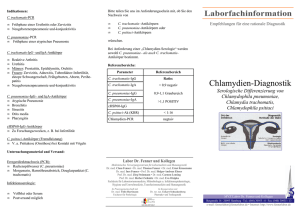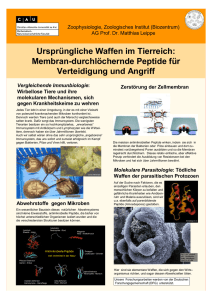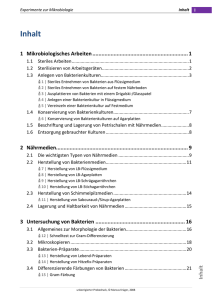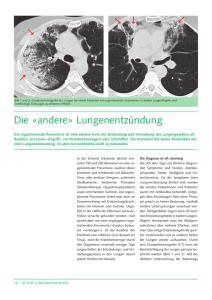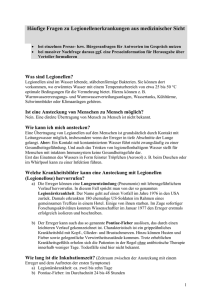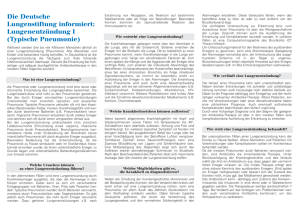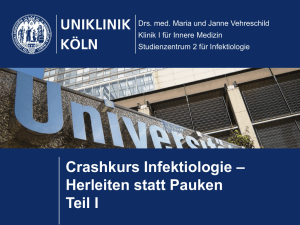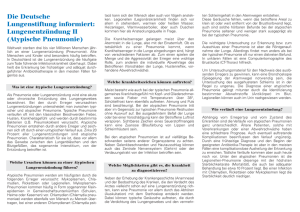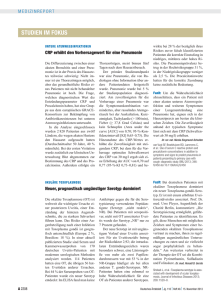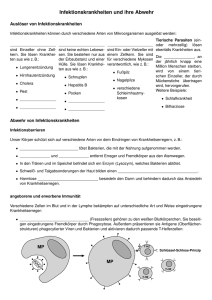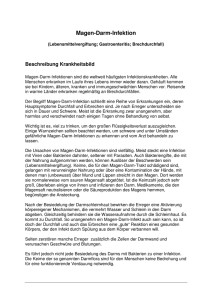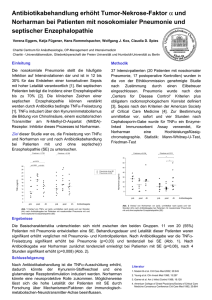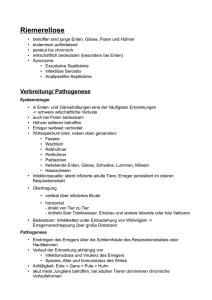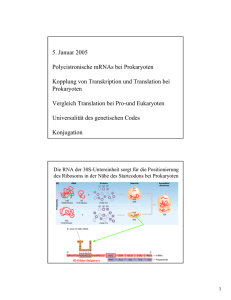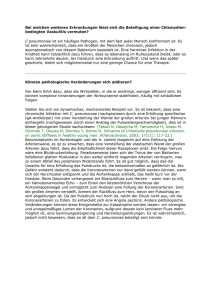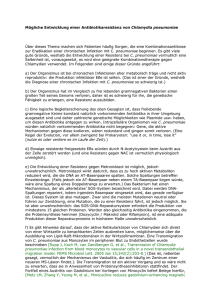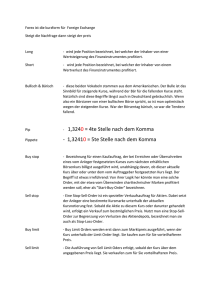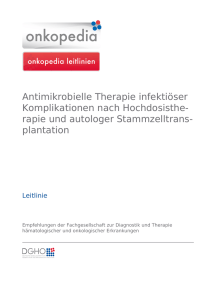Titel - Erkan Arslan
Werbung
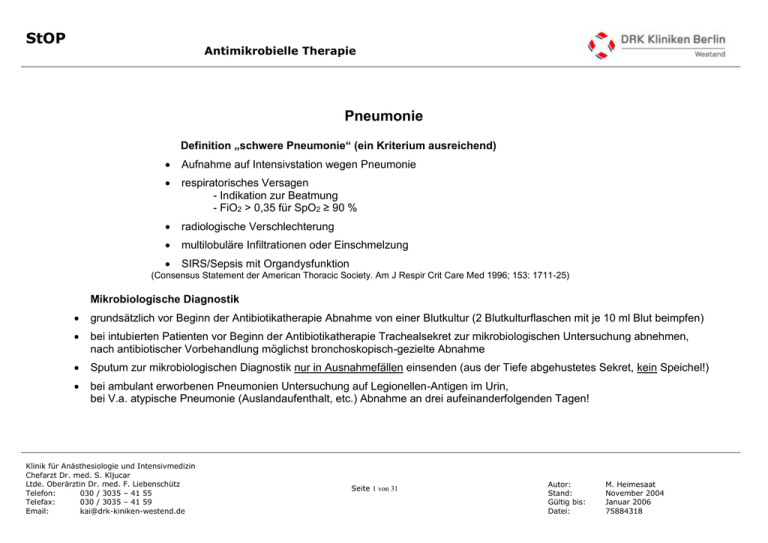
StOP Antimikrobielle Therapie Pneumonie Definition „schwere Pneumonie“ (ein Kriterium ausreichend) Aufnahme auf Intensivstation wegen Pneumonie respiratorisches Versagen - Indikation zur Beatmung - FiO2 > 0,35 für SpO2 ≥ 90 % radiologische Verschlechterung multilobuläre Infiltrationen oder Einschmelzung SIRS/Sepsis mit Organdysfunktion (Consensus Statement der American Thoracic Society. Am J Respir Crit Care Med 1996; 153: 1711-25) Mikrobiologische Diagnostik grundsätzlich vor Beginn der Antibiotikatherapie Abnahme von einer Blutkultur (2 Blutkulturflaschen mit je 10 ml Blut beimpfen) bei intubierten Patienten vor Beginn der Antibiotikatherapie Trachealsekret zur mikrobiologischen Untersuchung abnehmen, nach antibiotischer Vorbehandlung möglichst bronchoskopisch-gezielte Abnahme Sputum zur mikrobiologischen Diagnostik nur in Ausnahmefällen einsenden (aus der Tiefe abgehustetes Sekret, kein Speichel!) bei ambulant erworbenen Pneumonien Untersuchung auf Legionellen-Antigen im Urin, bei V.a. atypische Pneumonie (Auslandaufenthalt, etc.) Abnahme an drei aufeinanderfolgenden Tagen! Klinik für Anästhesiologie und Intensivmedizin Chefarzt Dr. med. S. Kljucar Ltde. Oberärztin Dr. med. F. Liebenschütz Telefon: 030 / 3035 – 41 55 Telefax: 030 / 3035 – 41 59 Email: [email protected] Seite 1 von 31 Autor: Stand: Gültig bis: Datei: M. Heimesaat November 2004 Januar 2006 75884318 StOP Antimikrobielle Therapie Ambulant erworbene Pneumonie (community acquired pneumonia, CAP) Epidemiologie der Erreger Spezies: Epidemiologie: Streptococcus pneumoniae - ältere Patienten - Z. n. Splenektomie - Alkoholismus Haemophilus influenzae - chronische Lungenerkrankungen (COPD) Staphylococcus aureus - Diabetes mellitus, - i.v.-Drogenabusus - Niereninsuffizienz Mycoplasma pneumoniae - epidemisch bei jungen Patienten Chlamydia psittaci - Vögel Coxiella burnetii - Tiere Legionella spp - Aerosole, Klimaanlagen Enterobacteriaceae (gramnegative Erreger) - COPD - FeV1 35% - Antibiotikavorbehandlung respiratorische Viren - saisonale Ausbrüche Seite 2 von 31 StOP Antimikrobielle Therapie Kalkulierte Antibiotikatherapie der ambulant erworbenen Pneumonie (CAP) (1) Jüngere Patienten ohne Komorbidität, keine schweren Verlaufsformen, keine Vitalfunktionsstörungen Häufigste Erreger: Antibiotika: •Streptococcus pneumoniae •Mycoplasma pneumoniae •Chlamydia pneumoniae •Haemophilus influenzae •bei epidemischen Ausbrüchen Influenza-Virus Makrolide oral – Clarithromycin (Klacid®) 2 x 500 mg/d alternativ: Tetracycline oral – Doxycyclin 1 - 2 x 100 mg/d cave: Pneumokokkenresistenz gegenüber Makroliden derzeit ca. 20% (November 2000) (Empfehlungen der Deutschen Gesellschaft für Pneumologie. T. Schaberg, K. Dalhoff, S. Ewig, J. Lorenz. Pneumologie 1998; 52: 450 – 62) Seite 3 von 31 StOP Antimikrobielle Therapie Kalkulierte Antibiotikatherapie der ambulant erworbenen Pneumonie (CAP) (2) Patienten mit Risikofaktoren und/oder beeinträchtigtem Allgemeinzustand Häufigste Erreger: Antibiotika: • Streptococcus pneumoniae • Haemophilus influenzae • S. aureus • Enterobacteriaceae • Legionella pneumophila • Mycoplasma pneumoniae • Chlamydia pneumoniae • bei epidemischen Ausbrüchen Influenza-Virus Aminopenicillin plus Betalaktamase-Inhibitor i.v. - Ampicillin/Sulbactam (Unacid®) 3 x 3 g/d alternativ: Cephalosporin Gruppe 2 i.v. - Cefuroxim (Zinacef®) 3 x 1,5 g/d jeweils in Kombination mit Makrolid oral oder i.v. - Erythromycin - Clarithromycin (Erythrocin®) (Klacid®) bei Betalaktam-Unverträglichkeit: Fluorchinolon Gruppe 4 oral - Moxifloxacin (Avalox®) 3 (- 4)* x 1g/d i.v. 2 x 500 mg/d p.o. 1 x 400 mg/d * gewichtsadaptiert ! (Empfehlungen der Deutschen Gesellschaft für Pneumologie. T. Schaberg, K. Dalhoff, S. Ewig, J. Lorenz. Pneumologie 1998; 52: 450 – 62) Seite 4 von 31 StOP Antimikrobielle Therapie Kalkulierte Antibiotikatherapie der ambulant erworbenen Pneumonie (CAP) (3a) Patienten mit schweren Pneumonien mit antimikrobieller Vorbehandlung Häufigste Erreger: Antibiotika: • Streptococcus pneumoniae • Legionella pneumophila • Staphylococcus aureus • Klebsiella pneumoniae • Enterobacteriaceae • Pseudomonas aeruginosa • bei epidemischen Ausbrüchen Influenza-Virus Acylureidopenicillin plus Betalaktamase-Inhibitor i.v. - Mezlocillin (Baypen®, Melocin®) 3 x 4 g/d plus ® Sulbactam (Combactam ) 3 x 1g/d alternativ: Cephalosporin Gruppe 3a i.v. - Cefotaxim (Claforan®) 3 x 2 g/d i.v. jeweils in Kombination mit Makrolid i.v. - Erythromycin (Erythrocin®) 3 (– 4)* x 1g/d i.v. * gewichtsadaptiert ! nach klinischer Besserung und wenn orale Belastung möglich Wechsel des Makrolids auf Clarithromycin (Klacid®) (in Anlehnung an die Empfehlungen der Deutschen Gesellschaft für Pneumologie. T. Schaberg, K. Dalhoff, S. Ewig, J. Lorenz. Pneumologie 1998; 52: 450 – 62) Seite 5 von 31 StOP Antimikrobielle Therapie Kalkulierte Antibiotikatherapie der ambulant erworbenen Pneumonie (CAP) (3b) Patienten mit schweren Pneumonien - bei COPD - bei anderen Lungenstrukturerkrankungen (z.B. Bronchiektasen) - mehrere ITS-Aufenthalte in demselben Jahr Häufigste Erreger: Antibiotika: • Pseudomonas aeruginosa • Streptococcus pneumoniae • Legionella pneumophila • Staphylococcus aureus • Klebsiella pneumoniae • Enterobacteriaceae Pseudomonas wirksames Betalaktam i.v. - Ceftazidim (Fortum®) - Pipril/Tazobactam (Tazobac®) - Imipenem/Cilastatin (Zienam®) - Meropenem (Meronem®) 3 x 2 g/d 3 x 4,5 g/d 3 x 1 g/d 3 x 1 g/d jeweils in Kombination mit Makrolid i.v. - Erythromycin (Erythrocin®) 3 (- 4)* x 1g/d i.v. alternativ: Fluorchinolon Gruppe 2 mit Pseudomonas-Aktivität i.v. (Monotherapie) - Ciprofloxacin (Ciprobay®) 3 x 400 mg/d Bei Nachweis von P. aeruginosa als Erreger antimikrobielle Therapie wie bei HAP (3) (in Anlehnung an die Empfehlungen der Deutschen Gesellschaft für Pneumologie. T. Schaberg, K. Dalhoff, S. Ewig, J. Lorenz. Pneumologie 1998; 52: 450 – 62) Seite 6 von 31 StOP Antimikrobielle Therapie Risikostratifizierung bei ambulant erworbenen Pneumonien (Fine-Score) Anamnese Alter (Männer) Alter (Frauen) Pflegeheim Vorerkrankung: Tumor Leber Herz Gefäße Niere Punkte = Jahre = Jahre - 10 + 10 Laborbefunde pH < 7,35 Harnstoff-N > 30 mg/dl Na+ < 130 mmol/l Glucose > 250 mg/dl (> 14 mmol/l) Hämatokrit < 30 % pO2 < 60 mmHg Pleuraerguß + 30 + 20 + 10 + 10 + 10 Punkte + 30 + 20 + 20 + 10 + 10 + 10 + 10 Klinik Verwirrtheit AF >30/min RRsyst < 90 mm Hg Temp < 35°C Temp > 40°C HF > 124/min Prognostische Eingruppierung, Letalität und Behandlungsmodalität Risikoklasse Scorewert Letalität Ort der Behandlung I ohne 0,4% ambulant II < 70 0,6% ambulant III 71-90 2,8% ambulant/stationär IV 91-130 8,2% stationär V > 130 31,1% intensivstationär nach Fine MJ et al. NEJM 1997; 336: 243-50 Seite 7 von 31 Punkte + 20 + 20 + 20 + 15 + 15 + 10 StOP Antimikrobielle Therapie Im Krankenhaus aufgetretene Pneumonie (hospital acquired pneumonia, HAP) Epidemiologie der Erreger Spezies: Epidemiologie: Streptococcus pneumoniae - ältere Patienten - Z.n. Splenektomie - Alkoholismus Haemophilus influenzae - chronische Lungenerkrankungen (COPD) Staphylococcus aureus - Diabetes mellitus, - i.v.-Drogenabusus - Niereninsuffizienz - Patienten nach SHT oder im Koma Legionella spp - chron. Glukokortikoid-Medikation Pseudomonas aeruginosa - COPD - Antibiotikavorbehandlung - intensivstationärer Aufenthalt - beatmete Patienten - chron. Glukokortikoid-Medikation Anaerobier - nach abdominalchirurgischen OPs - Aspiration Seite 8 von 31 StOP Antimikrobielle Therapie Im Krankenhaus aufgetretene Pneumonie (Hospital acquired pneumonia, HAP) Erregerspektrum und kalkulierte Antibiotika-Therapie abhängig von Risikofaktoren (u.a. antibiotische Vorbehandlung, Respiratortherapie) Länge des Aufenthaltes in der Klinik o Beginn der Pneumonie 1. bis 4. Krankenhaustag o Beginn der Pneumonie ab 5. Krankenhaustag → früh erworbene Pneumonie → spät erworbene Pneumonie Schweregrad der Pneumonie Kalkulierte Antibiotikatherapie der früh erworbenen Pneumonie (HAP) (1a) Nicht intubierte und intubierte Patienten Keine antibiotische Vorbehandlung Kein septischer Schock Häufigste Erreger: Antibiotika: • Streptococcus pneumoniae • Staphylococcus aureus (MSSA) • Haemophilus influenzae • E. coli • Klebsiella spp. • Proteus spp. Aminopenicillin plus Betalaktamase-Inhibitor i.v. - Ampicillin/Sulbactam (Unacid®) 3 x 3 g/d alternativ: Cephalosporin Gruppe 2 i.v. - Cefuroxim (Zinacef®) 3 x 1,5 g/d Nach antibiotischer Vorbehandlung → kalkulierte Antibiotikatherapie wie bei spät erworbener Pneumonie (HAP 2a)!!! Seite 9 von 31 StOP Antimikrobielle Therapie Kalkulierte Antibiotikatherapie der früh erworbenen Pneumonie (HAP) (1b) Intubierte Patienten Keine antibiotische Vorbehandlung Septischer Schock Häufigste Erreger: Antibiotika: • Streptococcus pneumoniae • Staphylococcus aureus (MSSA) • Haemophilus influenzae • E. coli • Klebsiella spp. • Proteus spp. Aminopenicillin plus Betalaktamase-Inhibitor i.v. - Ampicillin/Sulbactam (Unacid®) 3 x 3 g/d alternativ: Cephalosporin Gruppe 2 i.v. - Cefuroxim (Zinacef®) 3 x 1,5 g/d jeweils in Kombination mit Aminoglykosid i.v. - Gentamicin (Refobacin®) Nach antibiotischer Vorbehandlung → kalkulierte Antibiotikatherapie wie bei HAP 3 !!! (in Anlehnung an das Consensus Statement der American Thoracic Society. Am J Respir Crit Care Med 1996; 153: 1711-25) Seite 10 von 31 1 x 5 mg/kg KG/d StOP Antimikrobielle Therapie Kalkulierte Antibiotikatherapie der spät erworbenen Pneumonie (HAP) (2a) Nicht intubierte Patienten ohne COPD Kein septischer Schock Häufigste Erreger: Antibiotika: • Staphylococcus aureus (MSSA) • Streptococcus pneumoniae • Haemophilus influenzae • E. coli • Klebsiella spp. • Proteus spp. Acylureidopenicillin (ohne Pseudomonas-Aktivität) plus Betalaktamase-Inhibitor i.v. - Mezlocillin (Baypen®, Melocin®) 3 x 4 g/d plus Sulbactam (Combactam®) 3 x 1g/d oder: Cephalosporin Gruppe 3a (ohne Pseudomonas-Aktivität) i.v. - Cefotaxim (Claforan®) 3 x 2 g/d alternativ (z.B. bei Betalaktam-Allergie): Fluorchinolon Gruppe 4 oral - Moxifloxacin (Avalox®) 1 x 400 mg/d oder: Fluorchinolon Gruppe 2 i.v. - Ciprofloxacin (Ciprobay®) - Clindamycin (Sobelin®) (in Anlehnung an das Consensus Statement der American Thoracic Society. Am J Respir Crit Care Med 1996; 153: 1711-25) Seite 11 von 31 2 x 400 mg/d 3 x 600 mg/d i.v. StOP Antimikrobielle Therapie Kalkulierte Antibiotikatherapie der spät erworbenen Pneumonie (HAP) (2b) Intubierte Patienten Nicht intubierte Patienten mit COPD Kein septischer Schock Häufigste Erreger: Antibiotika: • Pseudomonas aeruginosa • Staphylococcus aureus (MSSA) • Enterobacter spp. • Acinetobacter spp. • Klebsiella spp. • Proteus spp. • Serratia spp. Acylureidopenicillin (mit Pseudomonas-Aktivität) plus Betalaktamase-Inhibitor i.v. - Piperacillin/Tazobactam (Tazobac®) 3 x 4,5 g/d oder: Cephalosporin Gruppe 3b (mit Pseudomonas-Aktivität) i.v. - Ceftazidim (Fortum®) 3 x 2 g/d oder: Pseudomonas wirksames Fluorchinolon i.v. - Ciprofloxacin (Ciprobay®) Bei Nachweis von Pseudomonas aeruginosa oder Acinetobacter spp. als verursachende Erreger einer Pneumonie grundsätzlich antimikrobielle Kombination (wie HAP 3) !!! (in Anlehnung an das Consensus Statement der American Thoracic Society. Am J Respir Crit Care Med 1996; 153: 1711-25) Seite 12 von 31 3 x 400 mg/d StOP Antimikrobielle Therapie Kalkulierte Antibiotikatherapie der spät erworbenen Pneumonie (HAP) (3) Septischer Schock Akutes Lungenversagen APACHE II > 16 Häufigste Erreger: Antibiotika: • Pseudomonas aeruginosa • Staphylococcus aureus (MSSA) • Enterobacter spp. • Acinetobacter spp. • Klebsiella spp. • Proteus spp. • Serratia spp. Betalaktam mit Pseudomonas-Aktivität i.v. - Piperacillin/Tazobactam (Tazobac®) oder: - Ceftazidim (Fortum®) oder: - Imipenem/Cilastatin (Zienam®) - Meropenem (Meronem®) 3 x 4,5 g/d 3 x 2 g/d 3 x 1 g/d 3 x 1 g/d jeweils in Kombination mit Aminoglykosid i.v. - Gentamicin (Refobacin®) 1 x 5 mg/kg KG/d oder: Fluorchinolon Gruppe 2 mit Pseudomonas-Aktivität i.v. - Ciprofloxacin (Ciprobay®) 2 x 400 mg/d (in Anlehnung an das Consensus Statement der American Thoracic Society. Am J Respir Crit Care Med 1996; 153: 1711-25) Seite 13 von 31 StOP Antimikrobielle Therapie Besonderheiten der antimikrobiellen Therapie bei Pneumonien (1) • Grundsätzlich 48h nach Behandlungsbeginn Erregernachweis und Resistenztestung in der Mikrobiologie (Tel.: 4650) erfragen. • Gegebenenfalls Korrektur (d.h. Erweiterung oder Umstellung) der initialen Antibiotikatherapie! Erreger Gezielte antimikrobielle Therapie Streptococcus pneumoniae Penicillin G Staphylococcus aureus (MSSA) Cefuroxim 3 x 1,5 g/d i.v. oder Ampicillin/Sulbactam (Unacid®) 3 x 3 g/d i.v.oder Flucloxacillin (Staphylex®) 4 (-6) x 2g/d i.v. bei schweren Verlaufsformen Kombination der Betalaktame mit Rifampicin (Rifa®) 1 x 10 mg/kg KG/d i.v. (maximal 7 Tage, cave: Leberenzyme!) MRSA Vancomycin 2 x 1 g/d i.v., bei schweren Verlaufsformen Kombination mit Rifampicin (Rifa®) 1 x 10 mg/kg KG/d i.v. Alternativ: Quinopristin/Dalfopristin (Synercid®) 3 x 7,5 mg/kg KG i.v. oder ® Linezolid (Zyvox ) 2 x 600 mg/d i.v. Legionella pneumophila Erythromycin 4 x 1g/d i.v. (3 Wochen) in Kombination mit Rifampicin (maximal 7 Tage). Alternativ: Erythromycin 4 x 1g/d i.v. in Kombination mit Fluorchinolon Gruppe 4 (Moxifloxacin 1 x 400 mg/d, Avalox®) oder Gruppe 2 (Ciprofloxacin 2 x 400 mg/d i.v., Ciprobay®) 4 (-6) x 5 Mio IE/d i.v. Seite 14 von 31 StOP Antimikrobielle Therapie Besonderheiten der antimikrobiellen Therapie bei Pneumonien (2) Erreger Gezielte antimikrobielle Therapie Enterobacter spp. Ciprofloxacin 3 x 400 mg/d i.v. Carbapenem (Imipenem/Cilastatin, Zienam® oder Meropenem, Meronem®) Acinetobacter spp. Piperacillin/Tazobactam (Tazobac®) oder Ceftazidim (Fortum®) oder Carbapenem (Imipenem/Cilastatin, Zienam® oder Meropenem, Meronem®) jeweils in Kombination mit Aminoglykosid (Gentamicin) Seite 15 von 31 StOP Antimikrobielle Therapie Behandlung mit Aminoglykosiden Gentamicin (Refobacin®) 1 Ampulle Refobacin® á 80 mg Gentamicin Dosierung:1 x 5 mg/kg Körpergewicht/d Aufrunden der Menge (240, 320, 400, 480, 560 mg) bei Pat. mit hohem Verteilungsvolumen (Sepsis!!!) Abrunden der Menge bei Pat. mit niedrigem Verteilungsvolumen (z.B. Linksherzinsuffizienz, Hypovolämie) Infusion über 30 min. i.v. (bei ZVK via Perfusor!) 60 min nach Infusionsbeginn Bestimmung des Gentamicin-Spitzenspiegels (angestrebt ≥ 10 mg/l), einmalige Bestimmung, wenn 10 mg/l durch kalkulierte Dosis erreicht oder überschritten wurde. Ggf. Erhöhung der Dosis auf 6 mg/kg KG! 24 Stunden nach Start der ersten Gabe Bestimmung des Gentamicin-Talspiegels (angestrebt ≤ 1 mg/l) Bei Patienten, deren Nierenfunktion nicht nennenswert eingeschränkt ist (Kreatinin-Clearance ≥ 60 ml/min), erfolgt die zweite Gentamicin-Infusion unmittelbar nach Abnahme des Blutes zur Talspiegel-Bestimmung. D.h. bei Patienten mit regelrechter renaler Funktion ist nur zu Beginn der Aminoglykosidtherapie je eine Spitzen- und Talspiegelbestimmung notwendig. Bei Patienten mit eingeschränkter Nierenfunktion (Kreatinin-Clearance ≤ 60 ml/min) erfolgt die zweite Gabe erst nach Bestimmung des Talspiegels. Bei Talspiegel ≥ 1 mg/l erneute Bestimmung nach 12 h Latenz. Kalkulation des Dosierungsintervalls auf 36 oder sogar 48h mit erneuter Talspiegelbestimmung. Bei eingeschränkter oder progredienter Nierenfunktionseinschränkung den Einsatz von Fluorchinolonen der Gruppe 2 mit PseudomonasAktivität (Ciprofloxacin, Ciprobay®) als Kombinationspartner überdenken (größere therapeutische Breite, da alternative Elimination biliär und aktive Sekretion in den Dünndarm)! Seite 16 von 31 StOP Antimikrobielle Therapie Pneumonie bei HIV (1) • Grundsätzlich Bronchoskopie und Gewinnung von mehreren bronchoalveolären Lavagen (BAL) zur mikrobiologischen Diagnostik. • Umgehender Versand mittels Coupon-Taxi zu Institut für Mikrobiologie und Krankenhaushygiene der Charité Fr. PD Dr. Halle Dorotheenstrasse 96 10117 Berlin Tel.: 2093 4722 alternativ: Institut für Infektiologie des Universitätsklinikums Benjamin Franklin Hindenburgdamm 27 12203 Berlin Tel.: 8445 3611 nach vorheriger telefonischer Anmeldung mit der Bitte um Mikroskopie bzgl. Pneumocystis carinii (Grocott-Färbung). • Eine Probe zur Untersuchung in hauseigene Mikrobiologie (Kultur, Resistenz) einsenden. • Sind Pneumocysten nicht nachweisbar kalkulierte Therapie der Pneumonie orientierend an Leitlinien und Grampräparat! Seite 17 von 31 StOP Antimikrobielle Therapie Pneumonie bei HIV (2) • Bei mikroskopischem Nachweis von gezielte antimikrobielle Therapie: Pneumocystis carinii in der BAL Cotrimoxazol (Bactrim®, Eusaprim®) 100 mg/kg KG/d i.v. in 4 Dosen/d als Infusion oder via Perfusor über 60 min. i.v. 60 kg: 4 x 3 Amp á 480 mg (TMP/SMZ 80/400) i.v. 70 - 80 kg: 4 x 4 Amp á 480 mg i.v. Behandlungsdauer 2 – 3 Wochen! Cave: in ca. 50% Emesis ! Prophylaxe mit Metoclopramid (MCP®) 3 x 10 mg/d i.v. ggf. Steigerung bis auf 4 x 20 mg/d i.v. wenn weiterhin Emesis Serotonin-Antagonisten - Odansetron (Zofran®) (Anemet®) Zusätzlich: Prednisolon (Solu Decortin®) bei - Kriterien für schwere Pneumonie oder - CD4-Lymphozyten < 200/µl oder - klinisch AIDS nach 5 Tagen Dosisreduktion Zusätzlich: Bei schweren Pneumonien Bei Sulfonamid-Unverträglichkeit: Folinsäure (Folsan®) 2-3 x 15 mg/d i.v. komplette Pause der retroviralen Therapie! Pentamidin (Pentacarinat®) Seite 18 von 31 10 mg/kg KG/d i.v. in 2 Dosen/d StOP Antimikrobielle Therapie Kalkulierte antimikrobielle Therapie der Peritonitis Peritonitis ohne bisherige antimikrobielle Vorbehandlung (1) Ausgehend von: Häufigste Erreger: Antibiotika: Magen/Duodenum Streptokokken Peptostreptokokken Candida albicans Aminopenicillin plus Betalaktamase-Inhibitor i.v. - Ampicillin/Sulbactam (Unacid®) 3 x 3 g/d oder: Cephalosporin Gruppe 2 i.v. - Cefuroxim (Zinacef®) Dünndarm, Gallenwegen E. coli Enterobacteriaceae Anaerobier 3 x 1,5 g/d Acylureidopenicillin (ohne Pseudomonas-Aktivität) plus Betalaktamase-Inhibitor i.v. - Mezlocillin (Baypen®, Melocin®) 3 x 4 g/d plus - Sulbactam (Combactam®) 3 x 1g/d oder: Cephalosporin Gruppe 2 i.v. - Cefuroxim (Zinacef®) 3 x 1,5 g/d in Kombination mit Metronidazol Seite 19 von 31 3 x 500 mg/d StOP Antimikrobielle Therapie Kalkulierte antimikrobielle Therapie der Peritonitis Peritonitis ohne bisherige antimikrobielle Vorbehandlung (2) Ausgehend von: Häufigste Erreger: Antibiotika: Appendix E. coli Enterobacteriaceae Anaerobier Acylureidopenicillin plus Betalaktamase-Inhibitor i.v. - Mezlocillin (Baypen®, Melocin®) - Sulbactam (Combactam®) 3 x 4 g/d plus 3 x 1g/d oder: Cephalosporin Gruppe 2 i.v. - Cefuroxim (Zinacef®) 3 x 1,5 g/d in Kombination mit Metronidazol wenn nach 48 h keine Besserung: Pseudomonas aeruginosa! - Piperacillin/Tazobactam Seite 20 von 31 3 x 500 mg/d (Tazobac®) 3 x 4,5 g/d StOP Antimikrobielle Therapie Kalkulierte antimikrobielle Therapie der Peritonitis Peritonitis ohne bisherige antimikrobielle Vorbehandlung (3) Ausgehend von: Häufigste Erreger: Antibiotika: Colon E. coli Enterokokken Anaerobier Enterobacteriaceae Pseudomonas aeruginosa (häufig polymikrobiell) Acylureidopenicillin (mit Pseudomonas-Aktivität) plus Betalaktamase-Inhibitor i.v. - Piperacillin/Tazobactam (Tazobac®) 3 x 4,5 g/d alternativ: Cephalosporin Gruppe 3b (mit Pseudomonas-Aktivität) i.v. - Ceftazidim (Fortum®) 3 x 2 g/d in Kombination mit Metronidazol 3 x 500 mg/d oder: Pseudomonas wirksames Fluorchinolon i.v. - Ciprofloxacin (Ciprobay®) in Kombination mit Metronidazol Seite 21 von 31 2 x 400 mg/d 3 x 500 mg/d StOP Antimikrobielle Therapie Kalkulierte antimikrobielle Therapie der Peritonitis Peritonitis mit antimikrobieller Vorbehandlung (postoperative Peritonitis, z.B. Nahtinsuffizienz) Häufigste Erreger: Antibiotika: Enterobacteriaceae Pseudomonas aeruginosa Enterokokken Anaerobier Acylureidopenicillin (mit Pseudomonas-Aktivität) plus Betalaktamase-Inhibitor i.v. - Piperacillin/Tazobactam (Tazobac®) 3 x 4,5 g/d alternativ: Carbapenem Imipenem/Cilastatin Meropenem Seite 22 von 31 (Zienam®) (Meronem®) 3 x 1 g/d 3 x 1 g/d StOP Antimikrobielle Therapie Spontane (primäre) Peritonitis (z.B. infizierter Aszites, Translokation bei Leberzirrhose) Antibiotika: Cephalosporin Gruppe 3a i.v. - Cefotaxim (Claforan®) plus Metronidazol bei schweren Verlaufsformen oder Sepsis 3 x 2 g/d i.v. 3 x 500 mg/d i.v. Aminopenicillin plus Betalaktamase-Inhibitor i.v. Ampicillin/Sulbactam (Unacid®) 3 x 3 g/d in Kombination mit Fluorchinolon Gruppe 2 mit Pseudomonas–Aktivität i.v. - Ciprofloxacin (Ciprobay®) 2 x 400 mg/d Seite 23 von 31 StOP Antimikrobielle Therapie Kalkulierte Antibiotikagabe bei nekrotisierender Pankreatitis (1) Möglichst vor Beginn der kalkulierten Antibiotikatherapie CT-gesteuerte Punktion der Pankreasnekrose (alternaiv: Sonografie-gesteuerte Punktion) mikrobiologische Kultur nach Erregernachweis gezielte antimikrobielle Therapie! Häufigste bakteriologische Befunde In Pankreasnekrosen*: Antibiotika: Staphylokokken Candida spp. Enterokokken E. coli Klebsiella spp. Streptokokken P. aeruginosa (selten) Mezlocillin plus Sulbactam (Baypen®, Melocin®) 3 x 4 g/d (Combactam®) 3 x 1g/d Weitere Optionen: Piperacillin/Tazobactam (Tazobac®) 3 x 4,5 g/d oder: Ciprofloxacin plus Metronidazol (Ciprobay®) 3 x 400 mg/d 3 x 500 mg/d oder: Carbapenem Imipenem/Cilastatin Meropenem Seite 24 von 31 (Zienam®) (Meronem®) 3 x 1 g/d 3 x 1 g/d StOP Antimikrobielle Therapie Kalkulierte antimikrobielle Therapie der nekrotisierenden Pankreatitis (2) - Büchler MW, Gloor B, Müller CA, Friess H, Seiler CA, Uhl W. Acute necrotizing pancreatitis: treatment strategy according to the status of infection. Ann Surg 2000; 232 (5): 619-26 - Wyncoll DL. The management of severe akute pancreatitis: an evidence based review of the literature. Intensive Care Med 1999; 25: 146-56 - Pederzoli P, Bassi C, Vesentini S, Campedelli A. A randomized multicenter clinical trial of antibiotic prophylaxis of septic complications in acute necrotizing pancreatitis with imipenem. Surg Gynecol Obstet 1993; 176 (5): 480-3 Seite 25 von 31 StOP Antimikrobielle Therapie Perioperative Antibiotikaprophylaxe (1) • Ziel: Prophylaxe postoperativer Wundinfektionen • Grundsätzlich Infusion 30 min. vor OP-Beginn, spätestens nach Anästhesieeinleitung • intraoperative Repetition - OP-Dauer > 3 h oder - hoher Blutverlust (Substitution > 4 EK) • postoperative Repetition - in Studien kein Vorteil erwiesen - maximal zweimalig am OP-Tag - längere Antibiotikagabe nur bei Kontamination der Wunde (z.B. intraoperativ), spezielle Anweisung Operateur ( Kurzzeittherapie) Obligat bei: Implantation von Endoprothesen (TEP, Duokopfprothesen, DHS) Implantation von Kunststoffen oder Fremdmaterialien (Pacemaker, Port, Hickmann- oder Broviak-Katheter, Vicryl- oder Prolene-Netze) Goretex- oder Dacron-Prothesen/Patches (Gefässchirurgie) Offene Frakturen Operationen an abdominellen/retroperitonealen Gefässen bzw. Gefässen der unteren Extremität Resezierende Eingriffe an Magen und Oesophagus Operationen an Gallenwegen Resezierende Eingriffe an Dünndarm, Colon, Appendix, Pankreas (OP n. Whipple) Hysterektomien, Sectio Caesarea (nach Abklemmen der Nabelschnur) Seite 26 von 31 2 g Cefazolin i.v. (Basocef®) 2 g Cefazolin i.v. (Basocef®) 2 g Cefazolin i.v. (Basocef®) 2 g Cefazolin i.v. (Basocef®) 2 g Cefuroxim i.v. (Zinacef®) 2 g Cefuroxim i.v. (Zinacef®) 2 g Cefuroxim i.v. (Zinacef®) 2 g Cefuroxim i.v. (Zinacef®) plus 500 mg Metronidazol 2 g Cefuroxim i.v. (Zinacef®) plus 500 mg Metronidazol StOP Antimikrobielle Therapie Perioperative Antibiotikaprophylaxe (2) Indikation nicht gesichert, d.h. stets Absprache mit Operateur bei: Mastektomien, Mamma-Reduktionsplastiken (bradytrophes Gewebe) Herniotomien Minimal-invasive Chirurgie Urologische Eingriffe cave Cephalosporine: ca. 10% Kreuzallergie bei Patienten mit Penicillinallergie! Bei Patienten mit Allergie auf Cephalosporine: - bei aseptischen Eingriffen sowie Magen/Oesophagus - Resezierende Eingriffe an Dünndarm, Colon, Appendix Seite 27 von 31 Clindamycin Clindamycin plus Ciprofloxacin StOP Antimikrobielle Therapie Kalkulierte antimikrobielle Therapie der Meningitis (1) Grundsätzlich vor Antibiotikatherapie Liquorpunktion: • 22 G-Spinalnadel (mit Introducer) • sterile Asservation von 5 ml Liquor in 5 ml-Spritze • 2 ml in gelbe Sarstedt-Monovette steril einfüllen ( Zellzahl, Glucose, Protein, Lactat) Labor • 2 ml in aerobe Blutkulturflasche injizieren (Beschriftung von Flasche und Begleitschein: “ Liquor“) • 1 ml in der Spritze belassen, mit sterilem roten Verschlussstopfen fest verschließen ( Grampräparat, Kultur) • Blutkulturflasche verbleibt auf ITS in Wärmeschrank • Liquor in 5 ml-Spritze wird grundsätzlich nach vorausgegangener telefonischer Ankündigung (Tel: 4650) in hiesige Mikrobiologie geschickt. • Falls MTA in Mikrobiologie nicht erreichbar: Frau Dr. Höck via Mobilfunk (0170 – 7646325) oder über Zentrale (4000 oder 111) anrufen lassen. • Falls Fr. Dr. Höck nicht erreichbar: Liquor nach vorausgegangener telefonischer Ankündigung (Tel: 2093 4722) in Mikrobiologisches Institut der Charité, Dorotheenstrasse 96 in 10117 Berlin senden. Unmittelbar nach Liquorpunktion kalkulierte antimikrobielle Therapie Patientengruppe/ Häufigste Erreger: Antibiotika: Erwachsene Neisseria meningitidis Streptococcus pneumoniae Cephalosporin Gruppe 3a i.v. - Cefotaxim (Claforan®) Gilbert DN, Moellering RC, Sande MA. The Sanford guide to antimicrobial therapy 2000 Seite 28 von 31 4 x 2 g/d StOP Antimikrobielle Therapie Kalkulierte antimikrobielle Therapie der Meningitis (2) Patientengruppe/ Häufigste Erreger: Antibiotika: Kinder ( 6 Jahre) Neisseria meningitidis Streptococcus pneumoniae Cephalosporin Gruppe 3a i.v. - Cefotaxim (Claforan®) Ältere Erwachsene ( 60 Jahre), vermuteter o. bekannter Alkoholismus Neisseria meningitidis Streptococcus pneumoniae Enterobacteriaceae Listerien Cefotaxim i.v. in Kombination mit Ampicillin i.v. (Claforan®) 4 x 2 g/d (Binotal®) 4 x 2 g/d Immunsupprimierte Patienten Streptokokken Listerien Enterobacteriaceae Pseudomonas aeruginosa S. aureus Ceftazidim i.v. in Kombination mit Ampicillin i.v. (Fortum®) 3 x 2 g/d (Binotal®) 4 x 2 g/d Gilbert DN, Moellering RC, Sande MA. The Sanford guide to antimicrobial therapy 2000 Seite 29 von 31 4 x 25 mg/kg KG/d StOP Antimikrobielle Therapie Kalkulierte antimikrobielle Therapie der Meningitis (3) Patientengruppe/ Häufigste Erreger: Antibiotika: Nach neurochirurgischen Eingriffen (nach SHT) S. aureus Koagulase negative Staphylokokken (KNS) Enterobacteriaceae Pseudomonas aeruginosa Flucloxacillin in Kombination mit Ceftazidim i.v. Ventrikulitis/ Meningitis durch infizierten ventrikulo-peritonealen Shunt S. aureus Koagulase negative Staphylokokken (KNS) Streptokokken Enterobacteriaceae Vancomycin in Kombination mit Cefotaxim i.v. oder Ceftazidim i.v. Gilbert DN, Moellering RC, Sande MA. The Sanford guide to antimicrobial therapy 2000 Seite 30 von 31 (Staphylex®) 4 x 2 g/d (Fortum®) 3 x 2 g/d 2 x 1 g/d (Claforan®) 4 x 2 g/d (Fortum®) 3 x 2 g/d StOP Antimikrobielle Therapie Kalkulierte antimikrobielle Therapie der Endokarditis (1) Patientengruppe/ Häufigste Erreger: Nativklappen Streptococcus spp. Enterokokken Staphylokokken Antibiotika: Ampicillin plus Flucloxacillin plus Gentamicin (Binotal®) 4 x 2 g/d i.v. (Staphylex®) 4 x 2 g/d i.v. (Refobacin®) 1 x 5 mg/kg KG/d i.v. (Unacid®) 3 x 3 g/d i.v. (Refobacin®) 1 x 5 mg/kg KG/d i.v. alternativ: Ampicillin/Sulbactam plus Gentamicin Prothetische Klappen Koagulase negative Staphylokokken (KNS) S. aureus Enterokokken (> 2 Monate post-op) Streptococcus viridans (> 2 Monate post-op) Vancomycin plus Gentamicin plus Rifampicin Seite 31 von 31 2 x 1 g/d i.v. (Refobacin®) 1 x 5 mg/kg KG/d i.v. (Rifa®) 1 x 10 mg/kg KG/d i.v.
